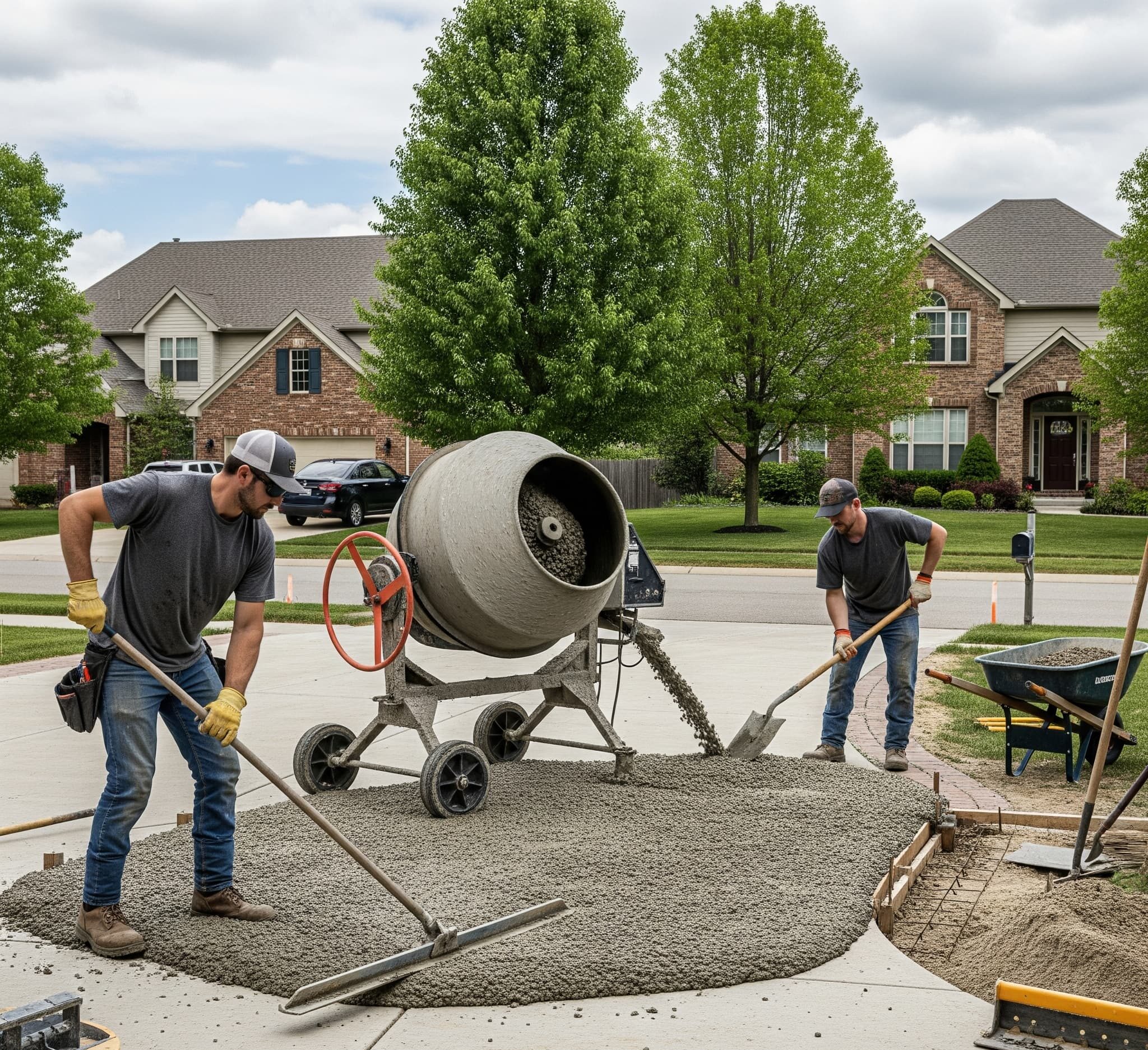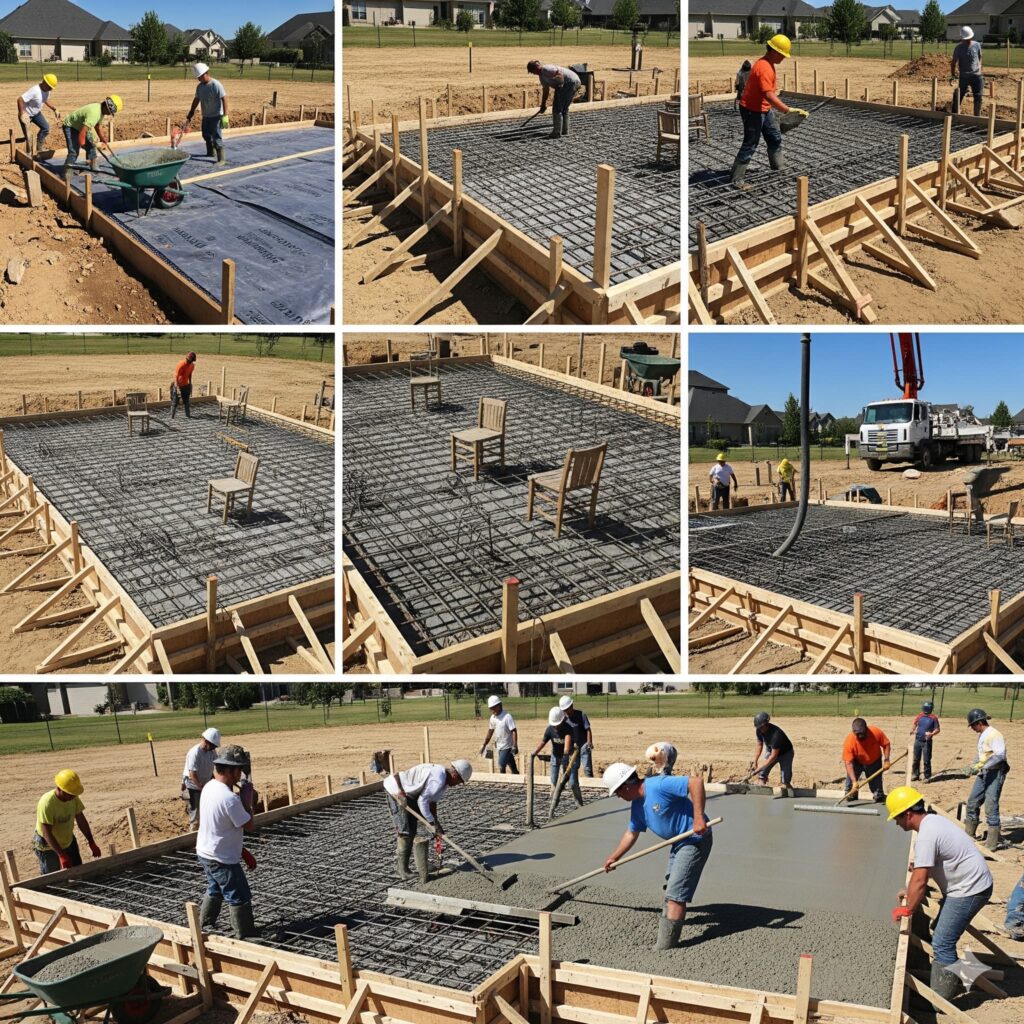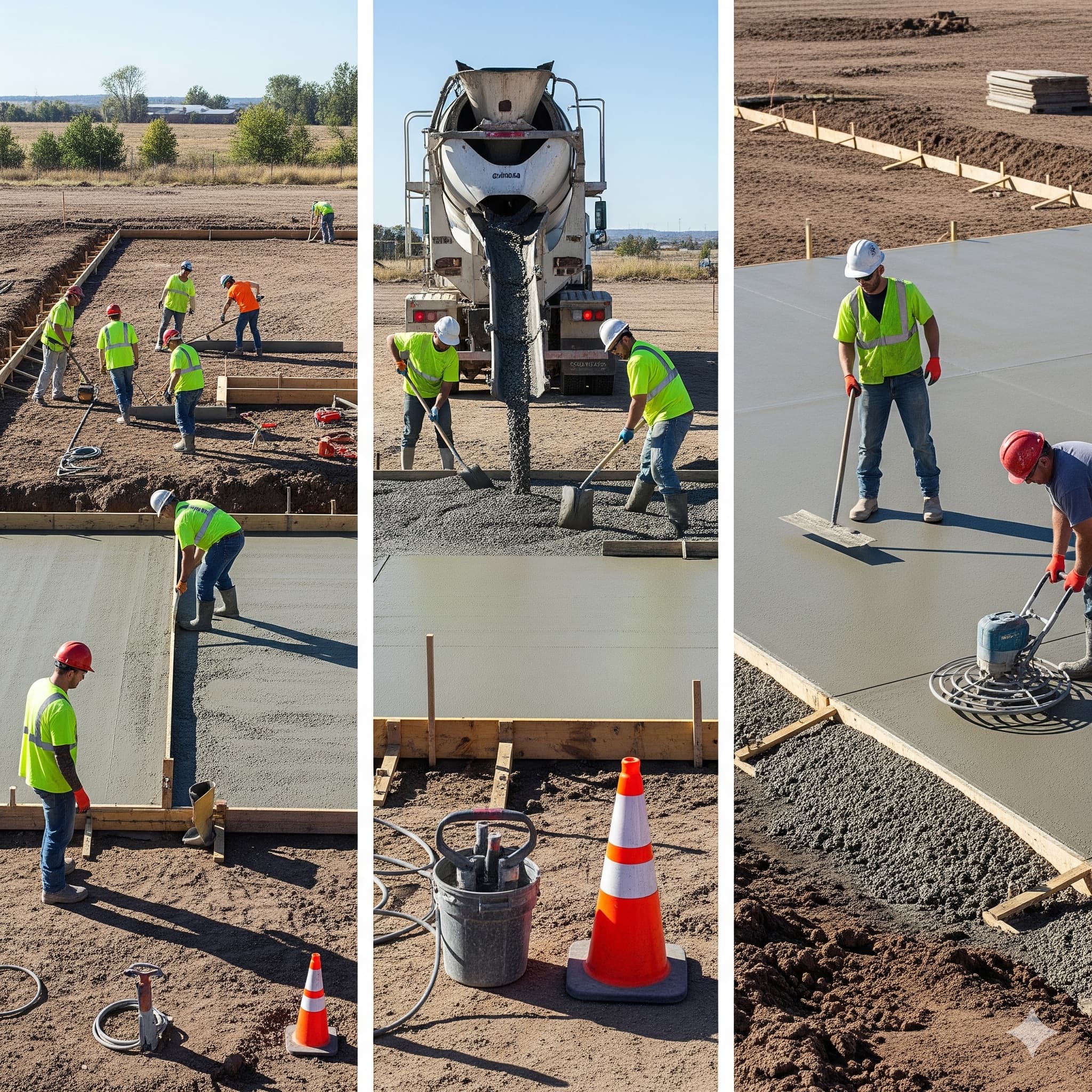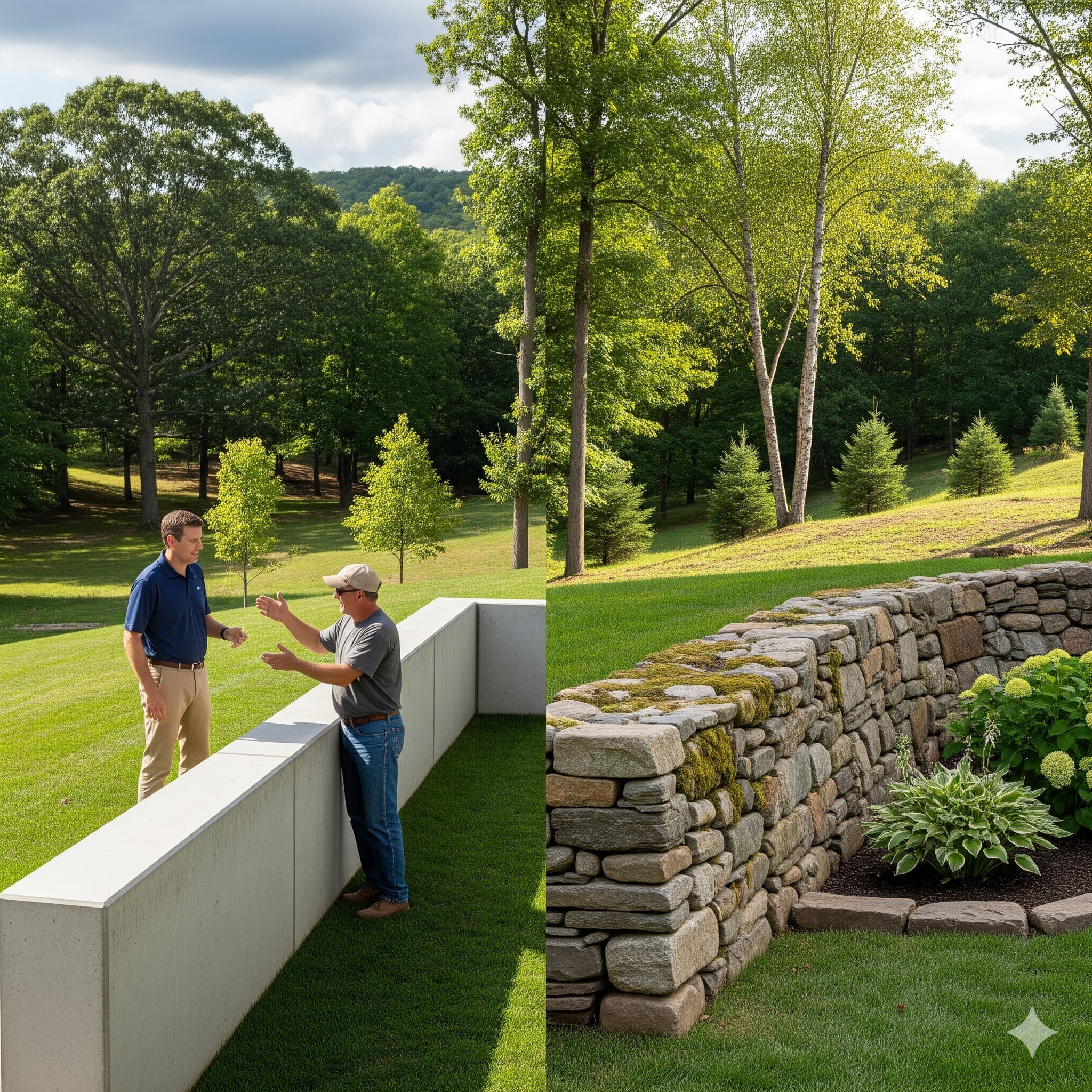
Essential Tips for Laying a Perfect Concrete Slab in New Haven
Concrete Slab
Creating a durable and properly installed concrete slab requires careful attention to Connecticut building codes, site preparation, and local climate considerations. Understanding essential techniques and best practices ensures successful projects that withstand New Haven’s seasonal weather variations while meeting structural requirements for long-term performance.

Connecticut Building Code Requirements
Connecticut State Building Code mandates minimum specifications for concrete slab construction, including thickness requirements and reinforcement standards. Residential concrete slabs must be at least 3.5 inches thick, with specific compressive strength requirements based on intended use and exposure conditions.
Air-entrained concrete becomes mandatory for exterior slabs subject to freeze-thaw cycles, essential for New Haven’s climate. The minimum cement content must reach 470 pounds per cubic yard, with 4% air entrainment for surfaces exposed to de-icing chemicals during winter months.
Reinforcement and Anchoring Specifications
Steel reinforcement placement varies by application, with wire mesh suitable for slabs under 5 inches thick, while rebar becomes necessary for thicker installations. Position reinforcement in the upper third of the slab to prevent surface cracking and temperature-related damage.
Anchor bolt requirements for attached structures follow specific spacing and penetration guidelines. Bolts must extend a minimum of 7 inches into concrete with proper positioning during placement to ensure structural connections meet engineering specifications throughout greater New Haven area projects.
Site Preparation and Excavation
Thorough site preparation forms the foundation for successful concrete slab installation. Remove all vegetation, organic material, and debris from the work area, ensuring clean, stable soil conditions that support long-term structural integrity.
Soil Assessment and Base Preparation
Evaluate soil conditions to determine appropriate base requirements for your specific location. Sandy soils typically require minimal preparation, while clay-based soils may need 6-8 inches of compacted gravel base for adequate drainage and stability.
Connecticut’s varied soil conditions, particularly in areas near Louis’ Lunch downtown or properties closer to Long Island Sound, require careful assessment of drainage characteristics. Properly compacted base materials prevent settlement and ensure uniform slab support across the entire installation area.
Formwork Construction and Layout
Accurate formwork construction ensures precise slab dimensions and proper surface levels. Use quality lumber or steel forms secured with adequate bracing to withstand concrete placement pressure without movement or deformation.
Leveling and Grade Establishment
Establish proper grades using transit levels or laser equipment to ensure adequate drainage away from structures. A minimum 2% slope away from building foundations prevents water accumulation while maintaining structural requirements.
Properties throughout New Haven’s historic areas, including neighborhoods near Center Church on the Green, often require careful coordination with existing structures and utilities. Precise layout work prevents conflicts with underground services while ensuring compliance with local setback requirements.
Concrete Mix Design and Delivery
Specify appropriate concrete mix designs based on intended use, exposure conditions, and Connecticut climate requirements. Standard residential mixes typically specify 3,000-4,000 PSI compressive strength with proper air entrainment for freeze-thaw resistance.
Weather Considerations for Placement
Schedule concrete placement during favorable weather conditions, ideally when temperatures range between 50-85°F. Avoid placement during extreme hot or cold conditions that could compromise curing quality or create finishing difficulties.
Monitor weather forecasts carefully, as rain during or shortly after placement can damage surface quality and compromise strength development. Connecticut’s unpredictable weather patterns make timing coordination with suppliers essential for successful installations.
Placement and Consolidation Techniques
Proper concrete placement techniques ensure uniform distribution and eliminate voids that could weaken the finished slab. Pour concrete continuously when possible, working systematically across the slab area to maintain consistent quality.
Screeding and Initial Leveling
Use straight screed boards to level concrete immediately after placement, removing excess material while filling low areas. Multiple passes may be necessary to achieve uniform surface elevation across the entire slab area.
Vibration equipment helps eliminate air pockets and ensures proper consolidation around reinforcement elements. However, avoid over-vibration, which can cause segregation and weaken the concrete mix, particularly important for decorative applications in visible areas.
Surface Finishing and Texturing
Select appropriate surface finishes based on intended use and aesthetic requirements. Smooth troweled finishes suit indoor applications, while textured surfaces provide slip resistance for outdoor installations.
Timing and Technique Considerations
Begin floating operations after surface bleeding water disappears, typically 20 minutes to 4 hours, depending on weather conditions. Premature floating can weaken surfaces, while delayed finishing creates difficult working conditions.
Bull floating eliminates surface imperfections and brings cream to the surface for subsequent finishing operations. Follow with edging, jointing, and final troweling according to specified finish requirements for each project area.
Control Joint Installation
Install control joints to manage cracking from concrete shrinkage during curing. Space joints at intervals equal to 2-3 times the slab thickness in feet, with joint depth reaching at least 25% of the slab thickness.
Joint Layout and Construction
Plan joint locations to create rectangular panels that accommodate natural shrinkage patterns. Avoid creating acute angles or irregular shapes that concentrate stress and promote random cracking.
Use groover tools for fresh concrete or early-entry saws for precise joint cuts. Properties near the Farmington Canal Greenway or other linear features may require additional joint considerations to accommodate ground movement or settling patterns.
Curing and Protection Methods
Proper curing maintains moisture levels necessary for strength development and durability. Apply curing compounds immediately after finishing or cover with wet burlap and plastic sheeting to prevent moisture loss.
Temperature Control and Protection
Protect concrete from temperature extremes during critical early curing periods. Use insulating blankets for cold-weather installations while providing shade and evaporation control during hot-weather conditions.
Maintain curing for a minimum of 7 days, with 28 days required for full strength development. Properties throughout New Haven’s varied microclimates may require adjusted curing procedures based on local exposure conditions and seasonal variations.
Quality Control and Inspection
Implement quality control measures throughout the installation process, including slump tests, temperature monitoring, and visual inspection of placement quality. Document procedures and results for warranty and compliance purposes.
Final Inspection and Acceptance
Conduct a thorough final inspection, checking surface quality, joint placement, dimensional accuracy, and overall workmanship. Address any deficiencies promptly while concrete remains workable or plan appropriate repair procedures.
Verify compliance with building permit requirements and schedule necessary inspections as required by New Haven building officials. Proper documentation and inspection ensure project acceptance and long-term performance throughout Connecticut’s challenging climate conditions.
Long-Term Performance Considerations
Quality concrete slab installation provides decades of reliable service when properly executed according to established standards and best practices. Regular maintenance and timely repairs maximize lifespan while preserving appearance and functionality.
Understanding local conditions and requirements helps ensure successful projects that meet both immediate needs and long-term performance expectations throughout New Haven’s diverse residential and commercial applications.
At New Haven Concrete Company, we follow all Connecticut building codes and employ proven installation techniques to ensure every concrete slab meets structural requirements and performs reliably in our local climate. Our attention to proper site preparation, quality materials, and precise execution delivers concrete slabs built to last.



